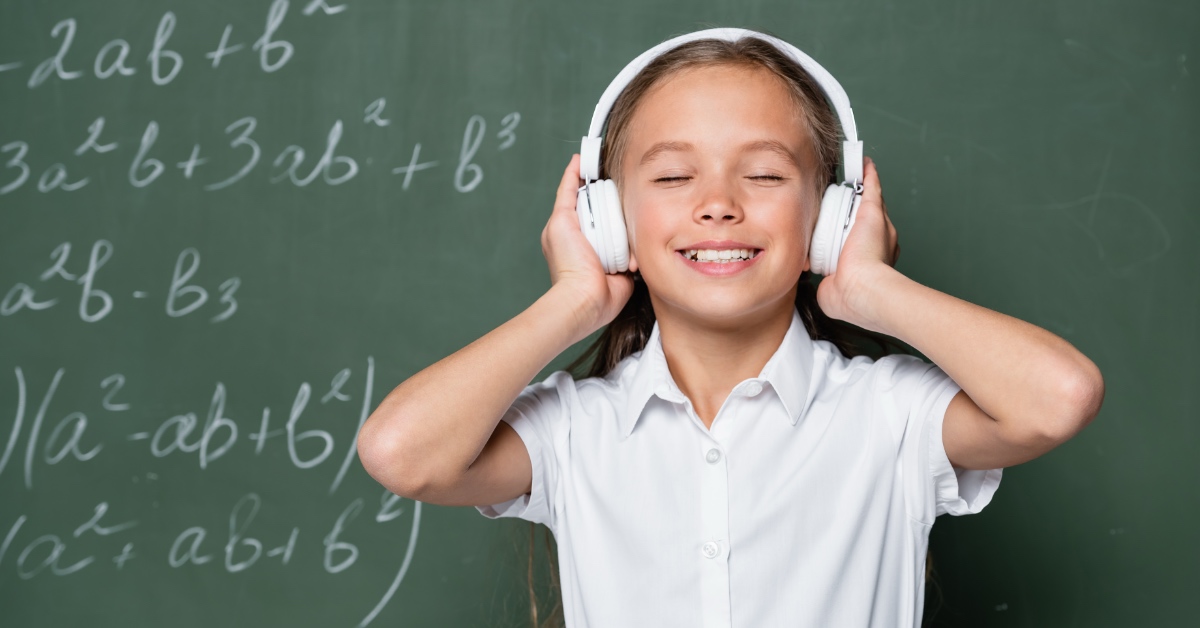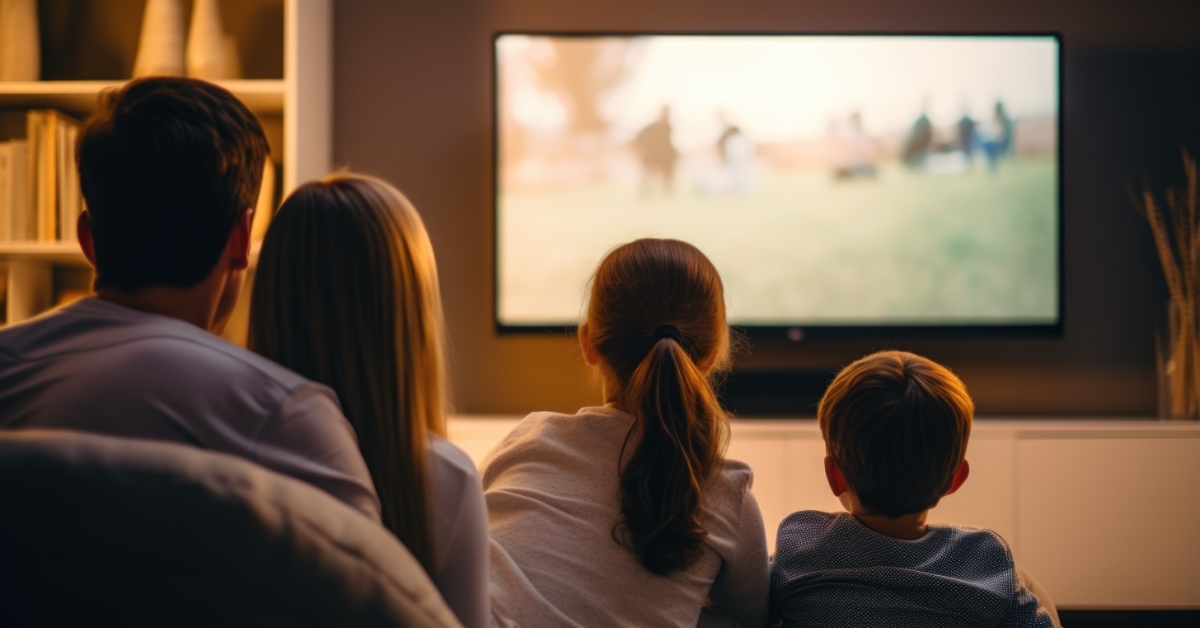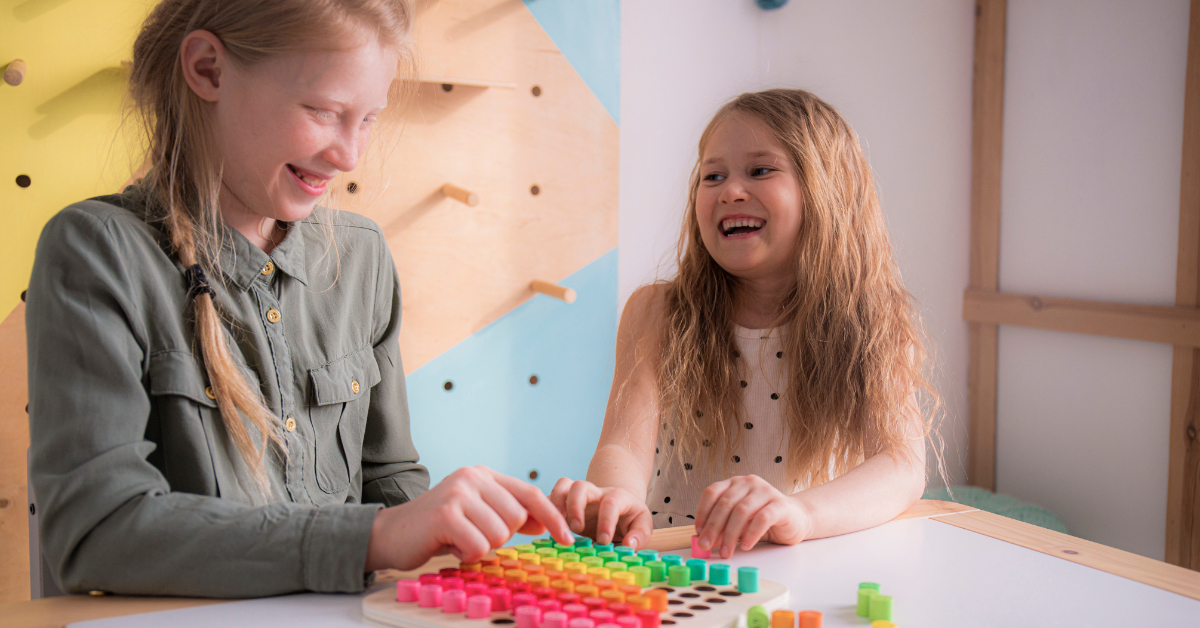
Today’s students aren’t just seeing new information—they’re touching, hearing, and even tasting it.
This is the world of multisensory learning, a holistic approach to education that engages multiple senses to create memorable, more fulfilling learning experiences. For visual thinkers, who tend to process information through images and spatial relationships, multisensory learning strategies can be particularly effective in opening up new pathways to comprehension and retention.
Multisensory learning isn’t just about making education more fun (although that’s certainly a bonus). It’s a scientifically backed approach that aligns with how the human brain naturally processes information. When we engage multiple senses, we create stronger neural connections, which translates to deeper understanding and better long-term retention of information.
For visual thinkers, who may struggle with traditional text-heavy or lecture-based instruction, multisensory learning techniques offer a bridge to connect their natural strengths with other modes of processing information. These strategies can help visual learners expand their cognitive toolkit and improve their ability to absorb complex concepts across various subjects.
Benefits of Multisensory Learning for Visual Learners
Multisensory learning offers numerous advantages for visual thinkers:
- Enhanced Comprehension: Multisensory learning helps visual thinkers build a more comprehensive understanding of ideas by reinforcing visual information with auditory, tactile, or kinesthetic elements.
- Improved Memory: When information is processed through multiple senses, it creates more neural pathways in the brain, making recall easier and more efficient.
- Increased Engagement: Multisensory activities are often more interactive and engaging, boosting motivation and attention, especially for visual learners who might find traditional methods less stimulating.
- Deeper Learning: By exploring concepts through various sensory inputs, students develop a more thorough and multi-faceted understanding of the subject matter.
- Adaptability: Multisensory approaches cater to various learning styles, allowing visual thinkers to leverage their strengths while developing skills in other areas.
The benefits of multisensory learning extend beyond the classroom. In the workplace, visual thinkers with multisensory skills can communicate more effectively with colleagues with different cognitive preferences.
Effective Multisensory Learning Strategies
To get the most out of multisensory learning for visual thinkers, consider incorporating these strategies:
- Visual Aids: Start with strong visual elements like diagrams, charts, and infographics, then layer in other sensory components. For example, pair a color-coded chart with textured materials to represent each category or data set.
- Kinesthetic Activities: Incorporate physical movement to reinforce visual concepts. This could involve acting out historical events, using body movements to represent mathematical operations, or creating human graphs to represent data.
- Auditory Complements: Use sound to support visual learning. This might include creating mnemonic songs for remembering facts, using sound effects to highlight key points in a presentation, or incorporating verbal explanations alongside visual demonstrations.
- Tactile Exploration: Introduce manipulatives and textured materials to support learning. For instance, Math-U-See manipulatives provide a hands-on way to understand mathematical concepts, allowing students to physically build and manipulate number representations.
- Multisensory Reading Strategies: To support reading skills development, combine visual word recognition with phonics (auditory), tracing letters (tactile), and acting out story elements (kinesthetic) for literacy instruction.
- Technology Integration: Utilize educational apps and software that combine visual elements with interactive features, sound, and touch-based interactions.
These multisensory techniques create a more immersive and effective learning experience for not only visual thinkers but all types of learners.
How to Implement Multisensory Techniques in Teaching
Incorporating multisensory learning into your teaching practice requires thoughtful planning and execution. Here are some guidelines to get you started:
- Balanced Lesson Planning: When creating lesson plans,
- Observe and Adapt: Pay close attention to how students respond to different multisensory activities and determine which combinations of sensory inputs resonate more strongly with them. Use this feedback to refine your approach.
- Scaffold Complexity: Start with simpler multisensory activities and gradually increase complexity as students become more comfortable with this learning approach.
- Encourage Active Participation: Design activities that require students to actively engage with the material using multiple senses rather than passively receiving information.
- Assess Effectively: Develop assessment methods that allow students to demonstrate their understanding through multiple modalities, not just written tests.
- Create a Multisensory Environment: Set up your learning space to support multisensory exploration, with areas for visual displays, hands-on activities, and quiet listening.
The goal of incorporating multisensory learning into your classroom is to create a learning environment that supports whole-brain learning, engages multiple intelligences, and caters to diverse learning styles.
Multisensory Learning Activities for Visual Thinkers
Here are some specific multisensory learning activities that can be particularly effective for visual thinkers:
- 3D Modeling: Have students create physical or digital 3D models to represent complex concepts while combining visual and tactile learning.
- Sensory Word Walls: Create vocabulary displays that include not just written words and pictures but also tactile elements and even scents where appropriate.
- Story Mapping: Use large visual maps with movable elements to break down story components and allow students to physically manipulate plot points and character relationships.
- Math Movement Games: Incorporate physical movement into math lessons, such as having students form shapes with their bodies or use dance to represent number patterns.
- Science Sensory Bins: Create themed sensory bins filled with materials related to a science topic, where students can visually and tactilely explore concepts.
- Historical Reenactments: Bring history to life by having students dress up, act out, and create visual artifacts from different historical periods.
- Musical Math: Combine auditory learning with visual representations using rhythm and song to help reinforce mathematical concepts.
These activities cater to visual thinkers by engaging multiple senses and creating a rich learning experience that can benefit all students.
Embracing the Multisensory Advantage
Multisensory learning strategies are an effective way to support visual thinkers and all types of learners. By engaging multiple senses, we can create more inclusive, effective, and engaging educational experiences that align with how the brain naturally processes information.
For visual thinkers, multisensory approaches create a bridge between their innate strengths and other learning modes, which helps them develop a more versatile cognitive toolkit. This supports their academic success but also prepares them for a multisensory world where adaptability and various skill sets are increasingly in demand.
As educators and parents, embracing multisensory learning techniques can open up new ways to engage students and make learning more enjoyable. By employing multiple senses, we can help visual thinkers and other students reach new heights in their educational journeys.
These strategies’ versatility and inclusivity can help a wide variety of learners. Children on the autism spectrum, for example, can greatly benefit from multisensory learning approaches.
As we continue to understand more about the intricate workings of the human brain and the many unique ways in which children learn, multisensory learning stands out for its ability to create more effective, engaging, and inclusive educational experiences. By embracing these strategies, we can help all learners thrive and reach their full potential.
For more insights and inspiration on different learning techniques, check out our interview with Temple Grandin in this episode of The Demme Learning Show.




Leave a Reply